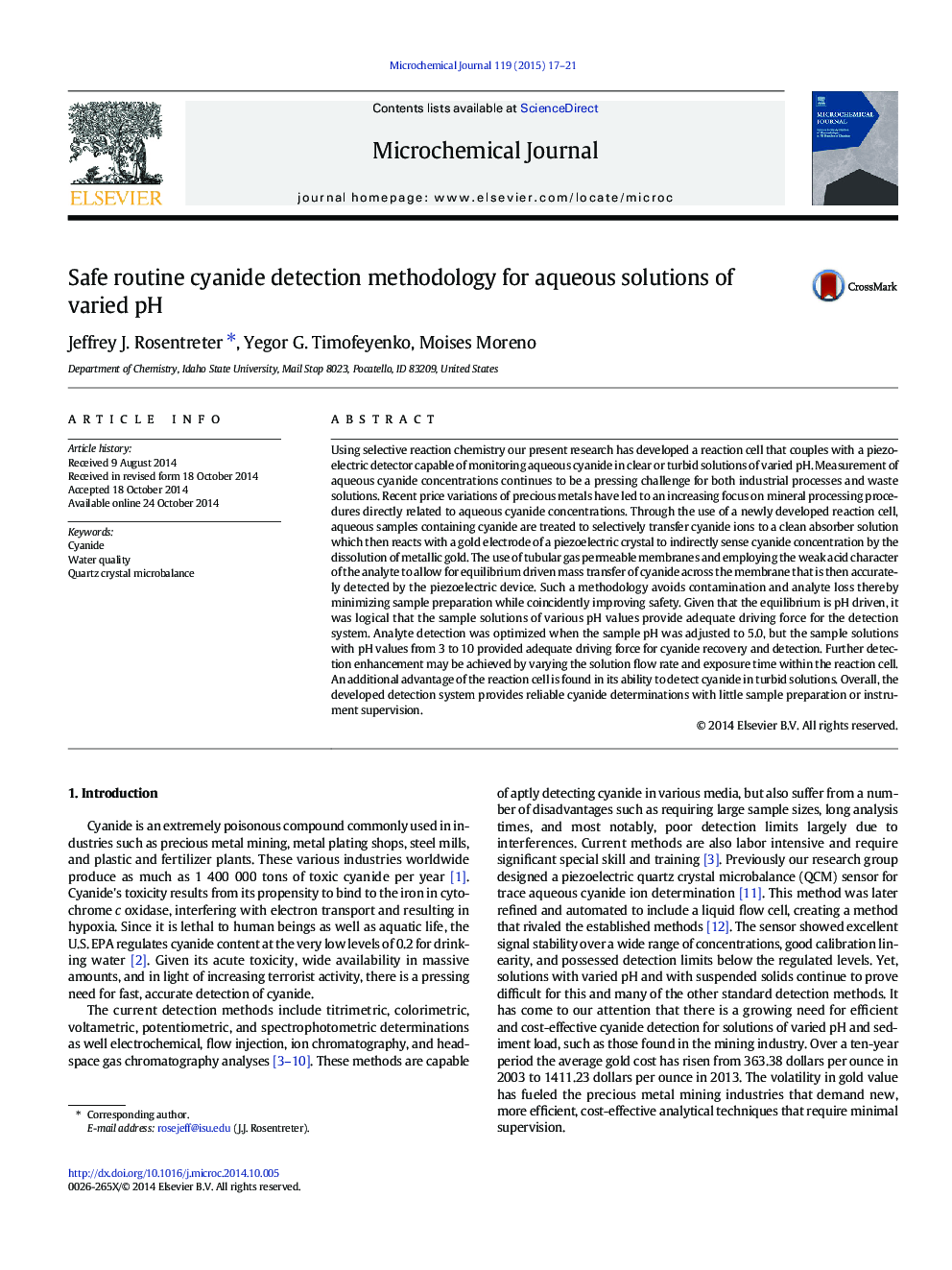| Article ID | Journal | Published Year | Pages | File Type |
|---|---|---|---|---|
| 1227725 | Microchemical Journal | 2015 | 5 Pages |
•A quartz crystal microbalance based cyanide detector designed for in-line, flow injection analysis.•For safety, the reaction cell and sensor operate in a sealed environment to avoid exposure to hazardous HCN emissions.•The reaction cell allows for the direct sampling and analysis of waters with a wide range of pH values.•The reaction cell also allows for straightforward cyanide analysis of turbid or colored aqueous solutions.
Using selective reaction chemistry our present research has developed a reaction cell that couples with a piezoelectric detector capable of monitoring aqueous cyanide in clear or turbid solutions of varied pH. Measurement of aqueous cyanide concentrations continues to be a pressing challenge for both industrial processes and waste solutions. Recent price variations of precious metals have led to an increasing focus on mineral processing procedures directly related to aqueous cyanide concentrations. Through the use of a newly developed reaction cell, aqueous samples containing cyanide are treated to selectively transfer cyanide ions to a clean absorber solution which then reacts with a gold electrode of a piezoelectric crystal to indirectly sense cyanide concentration by the dissolution of metallic gold. The use of tubular gas permeable membranes and employing the weak acid character of the analyte to allow for equilibrium driven mass transfer of cyanide across the membrane that is then accurately detected by the piezoelectric device. Such a methodology avoids contamination and analyte loss thereby minimizing sample preparation while coincidently improving safety. Given that the equilibrium is pH driven, it was logical that the sample solutions of various pH values provide adequate driving force for the detection system. Analyte detection was optimized when the sample pH was adjusted to 5.0, but the sample solutions with pH values from 3 to 10 provided adequate driving force for cyanide recovery and detection. Further detection enhancement may be achieved by varying the solution flow rate and exposure time within the reaction cell. An additional advantage of the reaction cell is found in its ability to detect cyanide in turbid solutions. Overall, the developed detection system provides reliable cyanide determinations with little sample preparation or instrument supervision.
